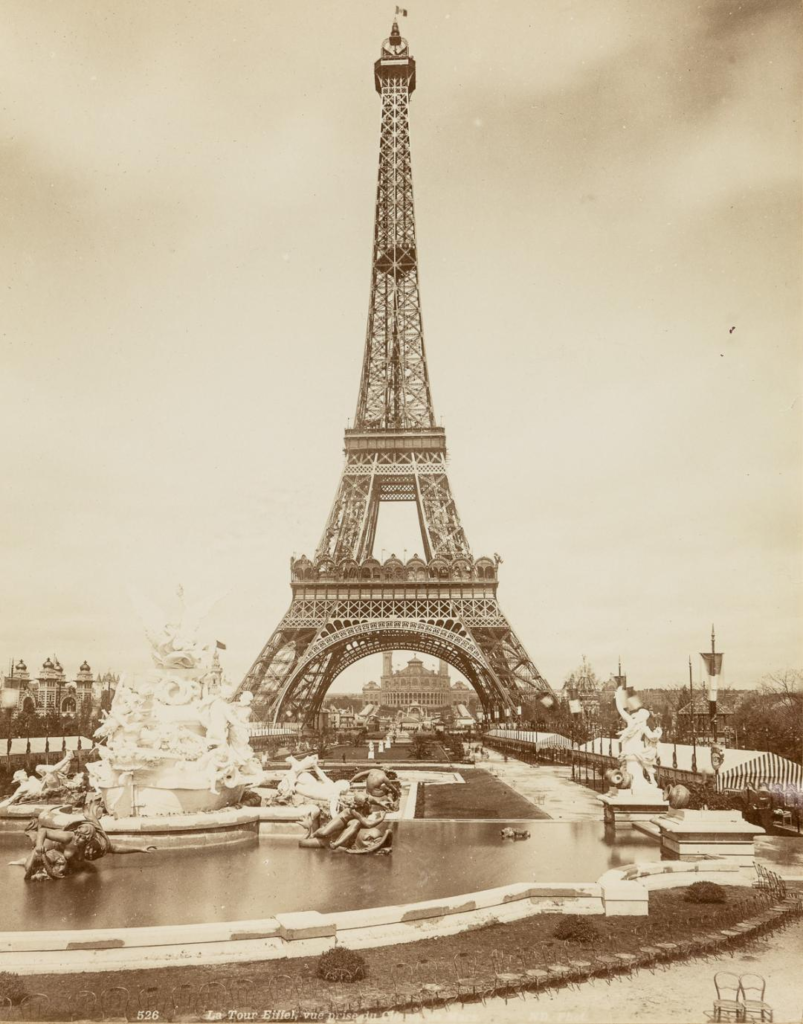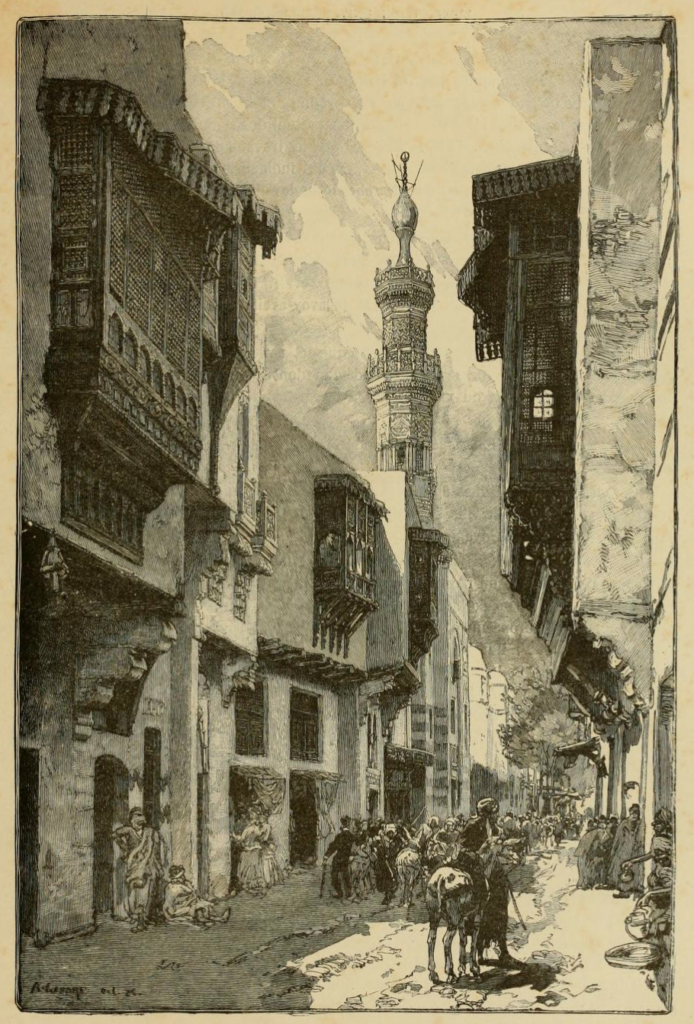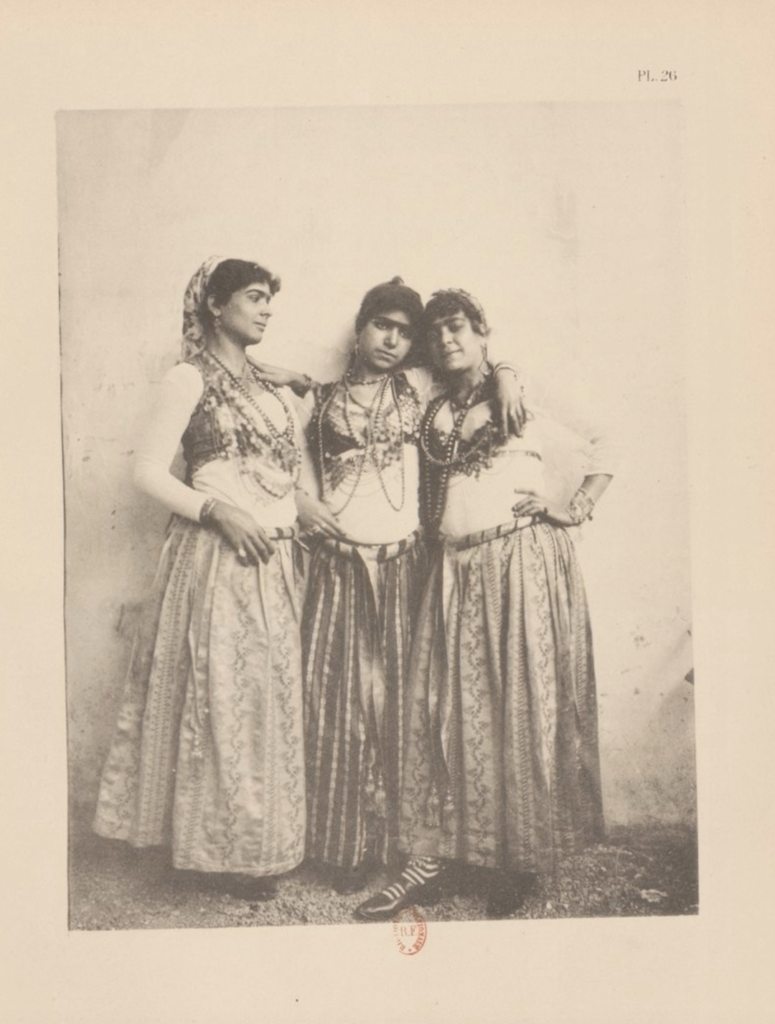“Cairo on the Seine: Rue de Caire and the Danse du Ventre at the l’Exposition Universelle Paris 1889”
by Dawn Devine ~ Davina – www.davina.us
In 1889 the city of Paris decided it would hold its fourth Exposition Universelle to commemorate the 100 year anniversary of the storming of the Bastille and the success of the French Revolution. This was going to be the biggest celebration of French progress in technology, the arts, and the might of its colonial empire. Because of the anti-monarchy sentiment of the event, it was boycotted by the governments of Germany, Great Britain, and the Netherlands just to name a few. But though it was boycotted, thousands came from across Europe and beyond to enjoy this amazing event!
Today, we still admire the crowning achievement of the Exposition: the erection of the “300 Meter Tower,” now named “Tour Eiffel,” the masterpiece of architect Gustave Eiffel. In May 1886 the Exposition committee issued a design challenge to create a tower 300 meters high. Out of more than 107 submissions, Eiffel won! Originally slated to stand for a mere 20 years, the Eiffel Tower continues on as a symbol of Paris.
Like its iconic Tower, the Exposition was truly massive. There were hundreds of buildings erected on the Champs de Mars, the Trocadero, and the Esplanade des Invalides. All in all, there were 16,722 exhibitors representing more than 35 countries. And over the course of the 5-month exhibition, more than 32 million visitors attended.
In a move to be bigger than any previous world’s fair, Baron Delort de Gléon envisioned not just a display in a building or a free-standing pavilion, but an actual street to showcase the art and lifestyle of his beloved Egypt. He conceived of the “Rue du Caire” which roughly translates to the “Streets of Cairo.” Gléon was an engineer and often lives as a French expatriate in Cairo. He applied for the commission for the Egypt exhibition space, and proposed an entire mini-street, creating a block-long passage that would give the impression of walking through a street in Egypt. Delort even created a souvenir book illustrated with his own photography.
Visitors to the Rue du Caire could peer into shops where craftsmen were creating shoes and other leather goods, weaving cloth, or making tents. As strollers passed down the street, they might witness a procession, take a ride on a donkey, or grab a lemonade from a traditional street hawker carrying a skin full of the beverage.
But for the very most adventurous, you could step into the cafe for lunch or tea and the most talked about show at the Exposition, the exotic Danse du Ventre, a dance now known by the English term belly dance. The dancers were imported, like most of the Rue du Cairo staff, directly from Egypt and they brought with them their authentic costumes and traditional dance that required an uncorseted figure to perform.
When the Exposition Universelle was over in the fall of 1889 and the ticket sales were tallied, it turned out that Rue du Caire was the second most profitable exhibit of the fair, right behind the iron lady herself, The Tour Eiffel.



For an impression of visiting the l’Exposition Universelle of 1889, and especially going to the Rue du Caire and seeing the dancing girls.
https://www.youtube.com/watch?v=yftSkqGDlfM&feature=youtu.be
All photos used in this article are in the public domain.

